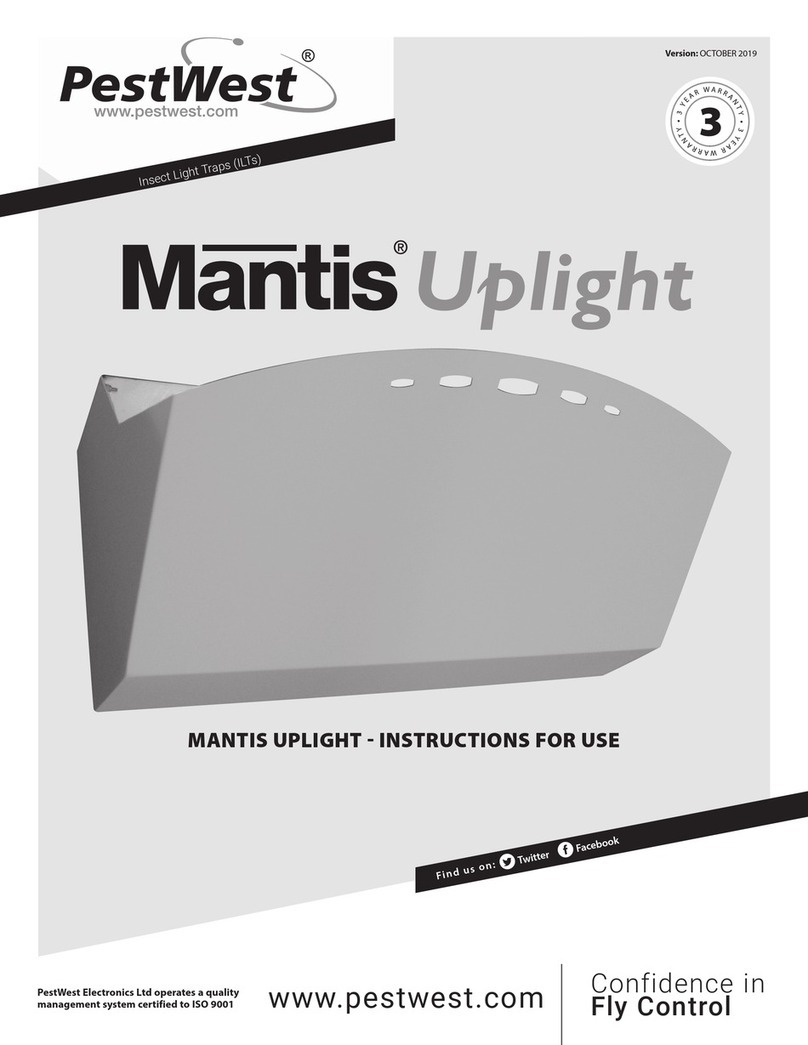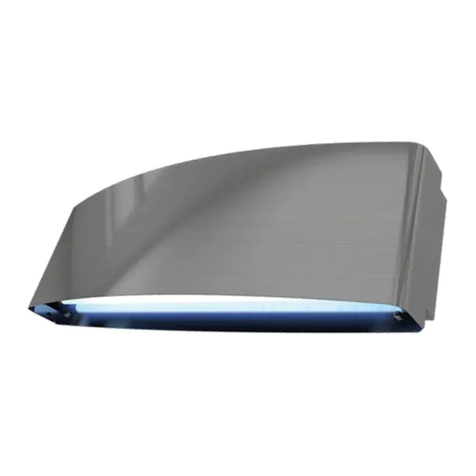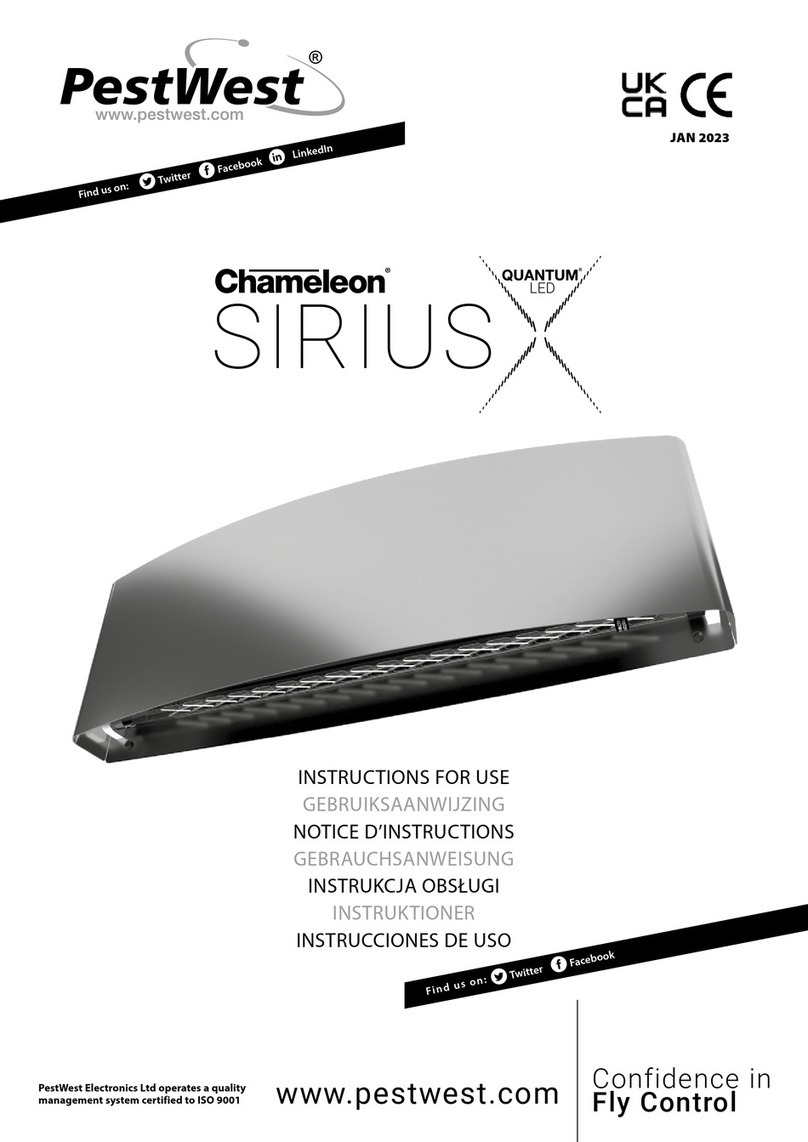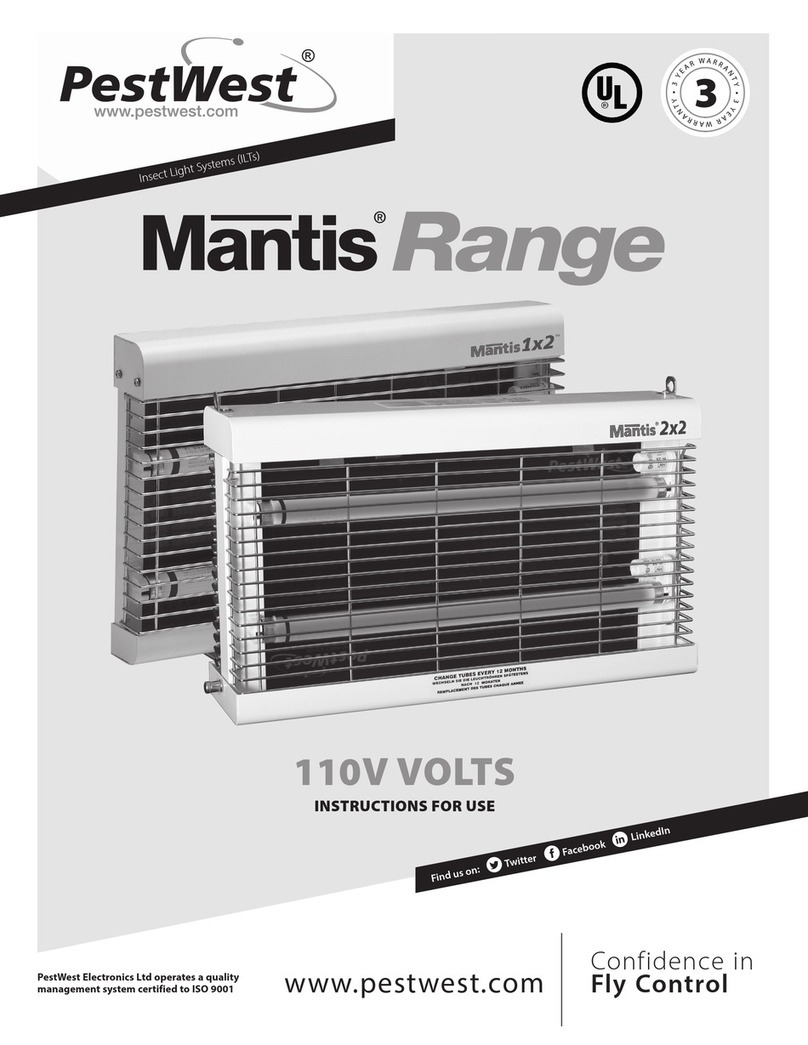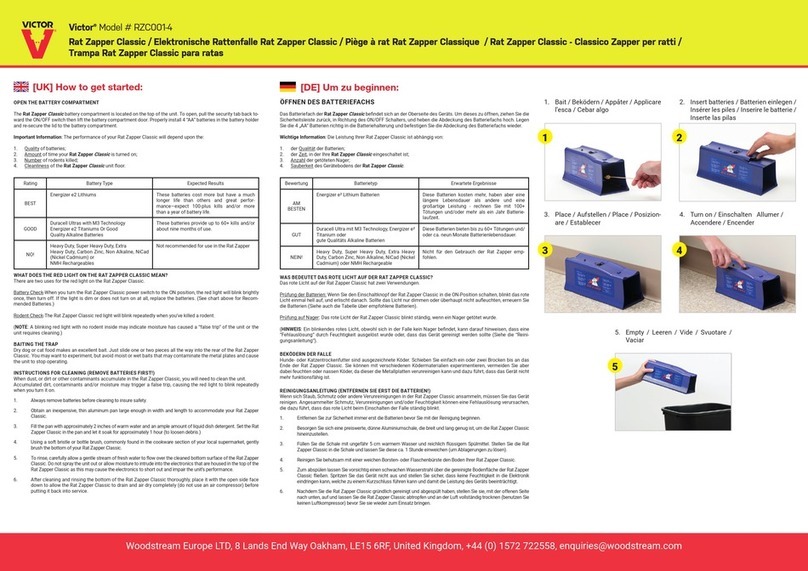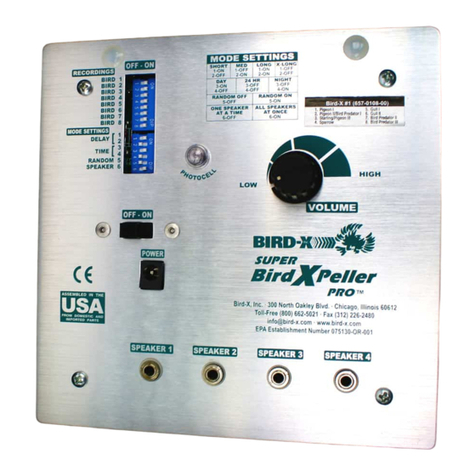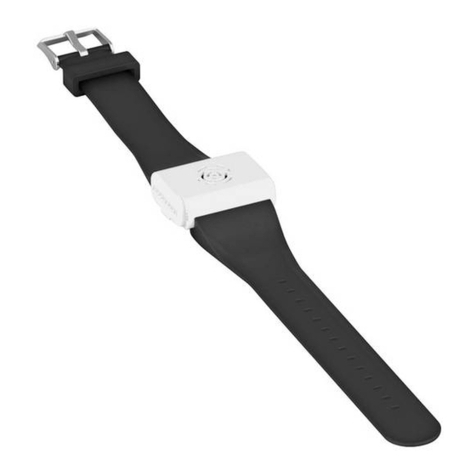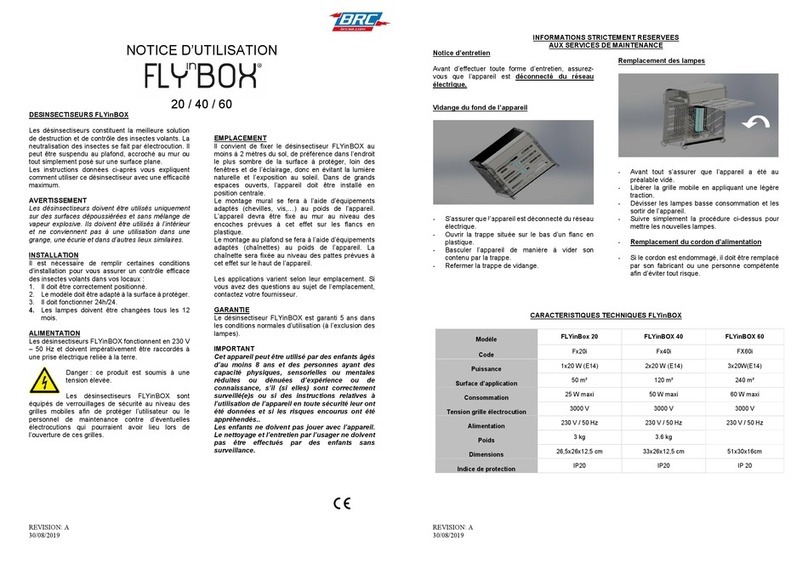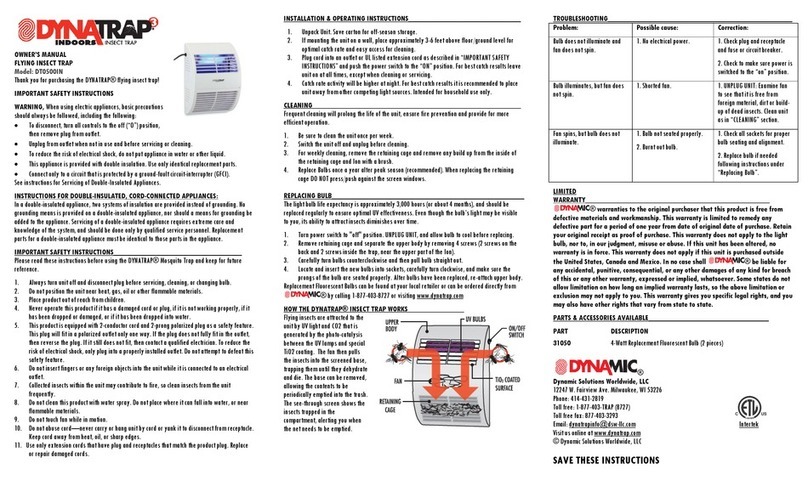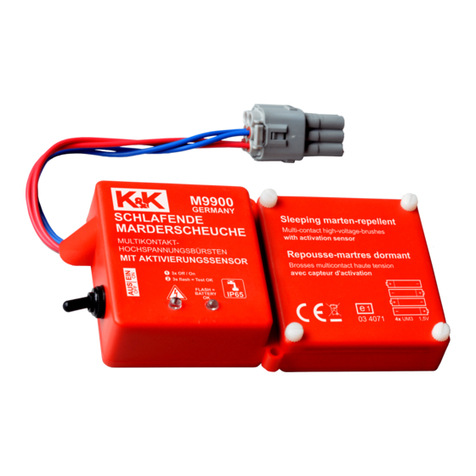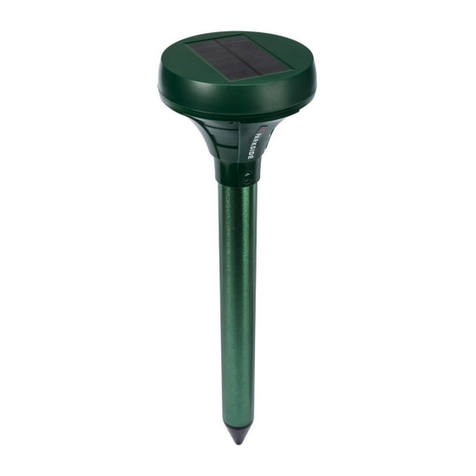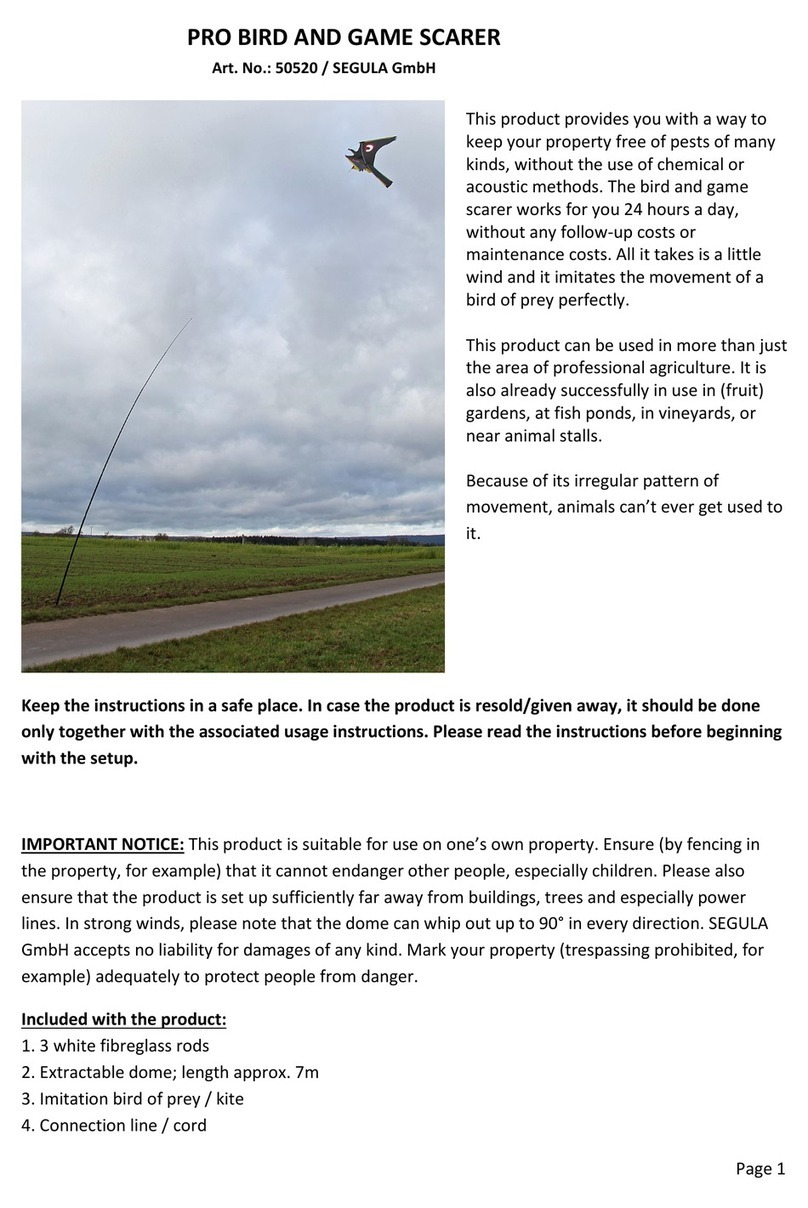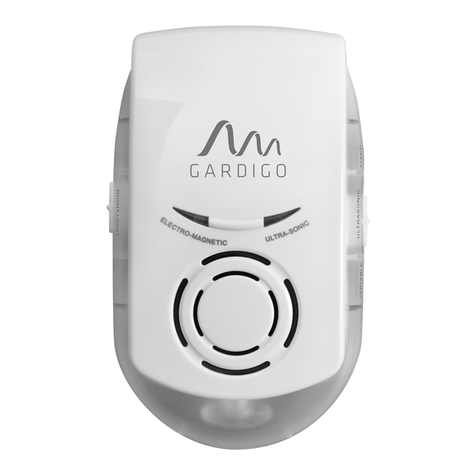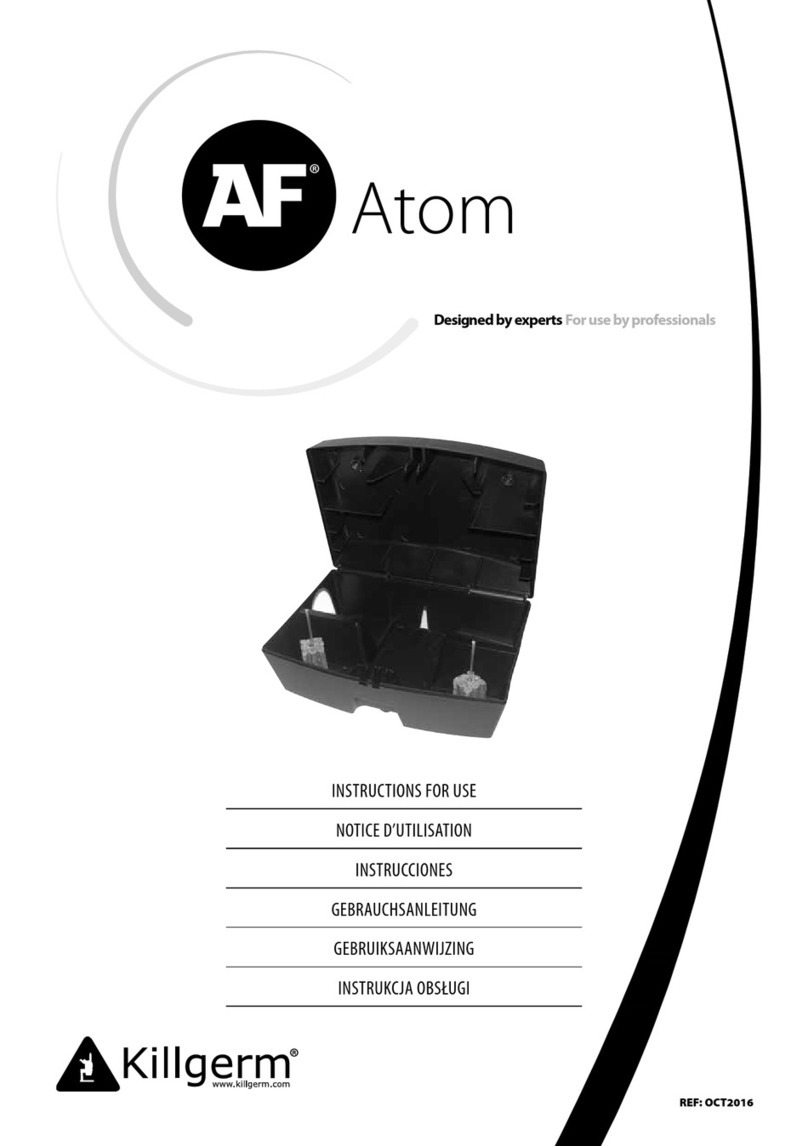
ALERT STATUS - TRAFFIC LIGHT PRIORITY SYSTEM & PROGRESS BAR
Each active yDetect® trap will display a coloured progress bar, showing progress towards the selected alert
level mentioned above. The bar will pass through green, amber and nally red, at which point an alert will
be activated and the servicing technician notied by email.
Where the trap is viewed in a list format, a circle marker will be displayed next to the trap’s name or number
reecting the colour of the progress bar for that trap, at that point in time.
If a trap loses internet connection, it will go into oine status, and display a black circle marker. When a trap
is in oine status, it will be unable to take and transmit images, and a list of troubleshooting information
will be displayed, giving you the option to either reconnect or change to an alternative connection method.
These coloured markers will also feature on the map, which is located on the dashboard of both the mobile
and web applications.
The most severe yDetect® trap status at a given site will be displayed, based on the following scale of
severity (with black being the most severe and green being the least severe):
• Black: Oine status / lost connection
• Red: Alert level reached / action required
• Amber: Nearing alert level / action imminent
• Green: No action required
TIME BASED SERVICE NOTIFICATIONS
Time based service notications can also be scheduled on a per-trap basis, for when UV-A tubes or sticky
boards which have not reached their alert level within a set time need to be replaced. When a service
notication is reached, an alarm clock symbol will be displayed within the coloured circle marker which
depicts the current alert status of that trap. An email will also be sent to the servicing technician alerting
them that a service is due.
Once the trap has been serviced, the alarm clock symbol will disappear, and the servicing dates recorded on
the trap information page.
SITING
Electrical y traps operate on the principle that most ying insects are attracted to light, particularly to the
ultraviolet (UV) end of the light spectrum.
The eciency of the trap can be aected by the intensity of other light sources, for example daylight or
other general lighting xtures. Therefore, mount the trap where competition from other light sources is
minimised.
In food areas, mount close to, but not directly above, exposed food or preparation surfaces to attract ies
away from sensitive areas rather than attract towards them. Observe where the ies tend to congregate and
if possible, put your y trap in or close to that area.
Site the trap near where ies are likely to gain access, e.g. doors and windows opening to the outside,
especially areas where waste bins are located.
Position the trap where it can be easily reached, ideally around head height for ease of servicing. Do not
position the trap directly over working machinery, where access may be dicult or dangerous.
6



